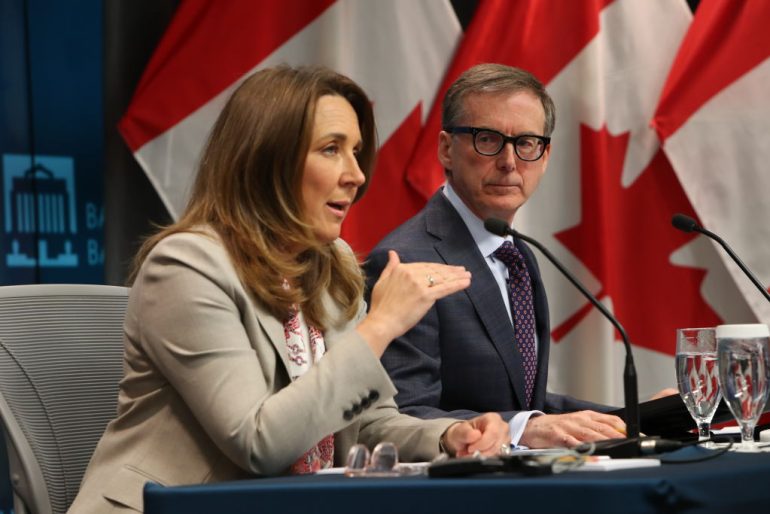The Bank of Canada’s Governing Council members opted for a 10th rate hike in July over concerns that waiting until September carried its own risks.
“The consensus among members was that the cost of delaying action was larger than the benefit of waiting,” read the minutes from the July 12 monetary policy meeting.
“With inflation projected to be around 3% for the next year and with the upside risks to inflation expectations and household spending, Governing Council members were concerned that the progress toward price stability could stall, and inflation could even rise again if upside surprises materialize,” the summary continued.
As a result, the Bank hiked its key lending rate to a 22-year high of 5%.
Additional tightening was needed due to “stronger than expected” demand
The summary of deliberations also outlined concerns the council members had over the continued strength in consumer spending and housing demand.
While the Bank said it expects the “pent-up demand” for services to ease over time, it also pointed to data suggesting continued strong growth in the second quarter.
“Retail trade data for April indicated ongoing demand for goods. These data were signalling growth in the second quarter for most interest-rate-sensitive sectors outside of motor vehicles,” the summary notes. “In addition, housing prices picked up as demand for housing continued to outpace supply.”
The Bank also pointed to the “recent surge” in population growth as a contributing factor impacting supply and demand. While council members agreed that newcomers had added to demand as they spend money once they get settled and find housing, they noted that it was “difficult to assess with precision” the net effect of population growth on excess demand.
Future rate decisions to be based on data
The Bank’s Governing Council members agreed that future rate decisions would be made “one at a time based on the available evidence,” given the uncertainty around current economic forecasts and the exact timing of the impact of higher interest rates on demand.
And while members said they were prepared to hike rates further if inflationary pressures don’t ease, they said they “did not want to do more than they had to.”
Feature image: David Kawai/Bloomberg via Getty Images








You are liying to your teeth. People are niw u der the line of powerty. Families are maxed up their credit cards and lines of credits to pay for their high interest Mortgages. Basically no money to feed their kids. Steeling Billions of dollors from people who are paying thousands more for high intrest only to savecthem a few hundred dollars on inflation cost? These are all dirty lies.